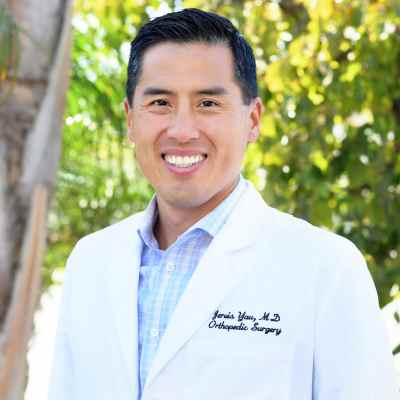Meniscus Transplant Surgeon

Have you had a previous meniscus surgery where all or a large portion of your meniscus was removed? Do you have a current injury so severe the meniscus cannot be saved? Younger, active individuals may be candidates for an alternative meniscus treatment, known as meniscal transplantation. Meniscus transplant surgeon, Dr. Jervis Yau is highly experienced in performing surgical meniscus replacement for patients in Santa Barbara in order to eliminate or prolong the development of painful knee arthritis in young, active patients. Contact Dr. Yau’s team today!
What is Meniscal Transplantation?
Two wedge-shaped pieces of cartilage known as the meniscus are located between the thighbone (femur) and the shinbone (tibia). The medial and lateral menisci are special cushions within each compartment that disperse force evenly across the knee joint to prevent cartilage injury. When the meniscus is torn, it loses the ability to disperse force, which will lead to increased focal contact force and ultimately, knee osteoarthritis. Young active patients with large meniscus tears that are irreparable and those who had previous surgery to remove large amounts of meniscus may be candidates for meniscal transplantation. Santa Barbara, Goleta, Santa Maria and Ventura, California orthopedic knee surgeon, Dr. Jervis Yau specializes in meniscus transplantation surgery to help improve knee function and pain with the goal of diminishing the risk of early onset knee osteoarthritis.
The lateral meniscus, located on the outside of the knee, absorbs approximately 70% of the knee’s impact within the lateral compartment, while the medial meniscus, located on the inside of the knee, absorbs approximately 50% of the forces based on its anatomy. Both structures play critical roles in preventing injury and osteoarthritis.
Should I Have a Meniscal Transplantation?
Dr. Yau’s goal with meniscus transplantation surgery is to replace the damaged meniscus with a donor meniscus prior to the onset of significant articular cartilage damage. In order to determine if a patient is a good candidate, Dr. Yau will perform a thorough history and physical examination followed by special diagnostic studies including xrays and MRI to assess for limb malalignment and joint status.
How is a Meniscal Transplantation Performed?
Dr. Yau performs meniscal transplantation utilizing an arthroscopic assisted approach. The procedure requires Dr. Yau to transplant a perfectly size matched meniscus from a cadaver donor into the patient’s knee. The meniscus is secured through circumferential sutures. It is important to note that Dr. Yau only uses meniscal grafts from tissue banks approved and regulated by the American Association of Tissue Bank. All allograft tissue must undergo strict harvest and processing guidelines to ensure the smallest risk of disease transmission.

What is the Recovery and Rehabilitation After a Meniscal Transplantation?
Following meniscal transplantation, Dr. Yau will prescribe a strict physical therapy program to all patients. In the majority of cases, the patient is required to wear a brace with protected weight bearing for approximately six weeks. The focus is early restoration of joint motion followed by a progressive strengthening program. Rehabilitation after meniscal transplantation can carry a lengthy recovery of up to one year. However, most patients can return to most activities by four to six months.
Meniscus transplantation is not a commonly performed procedure and carries a high risk of complication. It is not an option for most patients suffering from knee pain. Therefore, it is important for patients to seek out an orthopedic surgeon who is highly trained and experienced in performing meniscal transplantation to ensure successful outcome.
For additional resources on meniscal transplantation, or to determine if you are a candidate for meniscus replacement surgery, please contact Dr. Jervis Yau, orthopedic knee surgeon in the Santa Barbara, Goleta, Santa Maria and Ventura, California area.